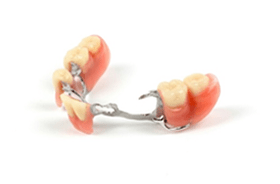Did you bite on a popcorn kernel and hear a "crac"? Have you been feeling discomfort on a tooth for over a week and wonder what is going on? Whether you are in pain or that you have a specific concern regarding a tooth, the emergency (or specific) exam will allow your dentist to answer your interrogations and to relieve you pain, if that’s your case.
The emergency exam includes:
- An examination of the affected area;
- Localized x-rays;
- A diagnostic for the concerned region;
- A specific treatment plan;
- A panoramic x-ray, if needed.
Most frequent dental emergencies.
1. The broken tooth
Whether it's after you've eaten crusty bread, a paddle while rafting or you took a nasty spill, broken teeth are amongst one of the most common dental emergencies. Please do not worry.
However, it is important to consult your dentist as soon as possible within 24 hours of the incident. Any trauma to the tooth can cause hidden lesions in the dental pulp and root.
What are the treatment options?
Your dentist will start by taking one or more X-rays to see if there is any damage to the pulp chamber of the traumatized tooth.
Unaffected root or pulp chamber
In cases where the pulp chamber is not affected, your dentist can, if possible, reattach the piece of your tooth.
In cases where this is not possible, your dentist will suggest rebuilding the tooth with composite (white filling) or replace the missing part with a ceramic restoration designed and manufactured the same day with Cerec technology
Affected Root or pulp chamber
When the root or pulp chamber is affected, the broken tooth should be removed and ideally replaced. Your replacement options are:
An implant
Your dentist will place an artificial root made of titanium, a biocompatible metal. Once the implant is placed, your dentist will place the crown on the implant. This option is ideal for replacing one or more missing teeth because it allows the stimulation of the jaw bone while offering a solidity and a masticatory force very close to a natural tooth. The implant is also a long-term and fixed option.

A bridge
A dental bridge connects the space created by one or more missing teeth. It consists of two or more crowns for the teeth on either side of the space of the missing tooth or teeth - these teeth are called the pillars. To prepare the pillars, your dentist will have to trim the natural tooth or teeth, as for any crown. It will be these pillars that will bear the false tooth or teeth, also called the pontic. Dental bridges are supported by natural teeth or implants. The bridge is also considered a fixed option but it is of medium duration and, unlike an implant, the bridge does not prevent bone loss because there is no artificial root to stimulate the jaw bone.

A partial prosthesis
This prosthesis is removable and held in place by metal hooks. Its lifespan is more or less 5 years.

Doing nothing
Your dentist will never recommend this option but will respect your decision.
Without stimulation, the bone of your jaw is absorbed. Remember that "teeth always go in search of their friends" so when a tooth is removed without being replaced, the opposite tooth will try in vain, over time, to meet the missing tooth. This phenomenon is called extrusion and can lead to the eventual fall of the tooth which is no longer supported by an antagonistic tooth. In addition, let us mention the unaesthetic aspect of a missing tooth, especially on your anteriors!

2. A decimented crown
The presence of decay under the crown or excessive occlusal forces (excessive pressure) are factors that contribute to a crown to deciment or simply falls. It can happen by simply chewing gum, jujubes or even eating something harder like a grain of popcorn.
When you lose a crown, it is important to properly conserve it. Contact your dentist for an appointment. Avoid as much as possible chewing on the affected side: it would be quite unfortunate to break the tooth by after losing the crown that was protecting it.
If the crown is still well adapted and the tooth under the crown is not decayed, your dentist should be able to ciment it back.
3. The dental abcess
There are two types of dental abscesses:
- The periodontal abscess is the one that erupts on the gum is due to infection. If this abscess is not treated, it can cause disintegration of the teeth or the bone of the jaw.
- The periapical abscess is that which arises at the apex of the tooth, that is, the part around the root of the tooth.
How to recognize a dental abscess?
- Difficulty opening the mouth;
- Swelling under the skin;
- A strong and elongating pain;
- Bad breath (halitosis);
- A bad taste in the mouth;
- An inflamed and red gingiva;
- In the more advanced cases, an evacuation of pus.
What causes an abscess?
- Deep cavities;
- Shock to tooth and / or soft tissue;
- Gum disease;
- Caries too long neglected;
- A fracture of the tooth.
What are the treatment options?
Your dentist will most often prescribe an antibiotic to fight the infection. It may also be necessary to drain the pus on the site of the abscess. When you have finished your antibiotic cycle, your dentist may need to perform a root canal treatment on the affected tooth (in the case of a periapical abscess) and then seal the hole and place a crown or composite restoration. Your dentist may also have to extract the affected tooth. He will then suggest replacement options for the extracted tooth.
